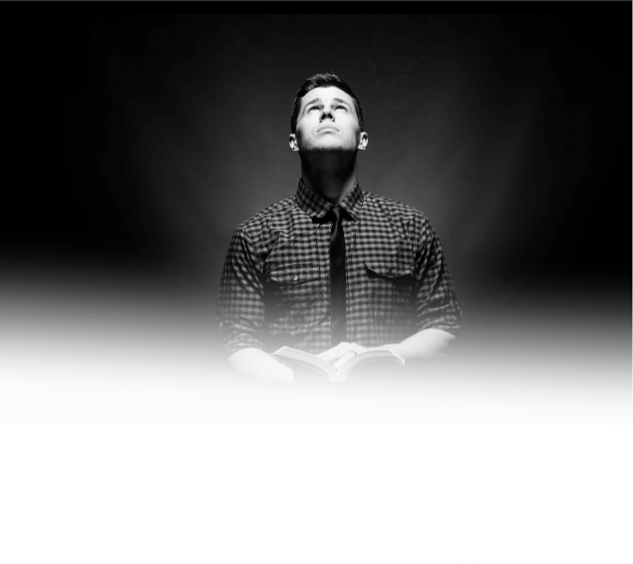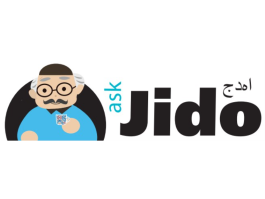The Yamim Noraim (High Holidays) are upon us, the time when we take stock of the year that has passed, make commitments for the new year, and come before Gd to express our wishes for the coming year. We bring with us a list of requests – typically, requests for financial security, for our children’s success, for health, for shidduchim for our unmarried children, and so on. With the world still struggling through a pandemic, this list might be longer, and the requests more urgent, than in normal years.
The Zohar makes a comment which, at first glance, appears to be telling us that this entire enterprise is wrong and misguided, that we are not to present to Gd our personal pleas for the upcoming year. In this passage, the Zohar strongly condemns those who “bark hav like a dog.” The Aramaic word “hav” means “give me,” and those who repeatedly say, “Hav” sound like they mimic the barking of a dog. The Zohar teaches that it is wrong to come before Gd “like a dog,” asking for all the things we want – financial success, joy from our children, good health, and so on.
We must ask, why is this the case? Isn’t this what we’re supposed to do? Especially this time of year, are we not expected to beseech Gd for a favorable judgment?
We might also wonder why the Zohar compares someone who presents these requests to a dog. Why do people deserve to be called animals for praying to Gd to fulfill their wishes and grant them their needs?
Hannah’s Prayer
On the first day of Rosh Hashanah, we read a special haftarah – the story of Hannah, the mother of the prophet Shemuel (from the first chapter of the Book of Shemuel I). After being unable to conceive for many years, Hannah recited a stirring, heartfelt prayer to Gd outside the Mishkan. This prayer is regarded as the prototype of Jewish prayer; the Gemara in Masechet Berachot derives a number of crucial halachot relevant to prayer from the description of Hannah’s tearful petition. For example, Hannah prayed with her lips moving but inaudibly – from which the Sages learned that we must enunciate each word, but pray quietly, without being heard.
But what makes Hannah’s prayer particularly instructive is a different element. She pledged to Gd that if she would be blessed with a son, she would “give him to Gd his entire life.” Hannah fulfilled this pledge when, several years after her child, Shemuel, was born, she brought him to the Mishkan and gave him to the kohen gadol, Eli. After desperately yearning for a child, and finally being blessed with a boy, she did not even keep him at home. In fulfillment of her vow, she placed him in the service of the Mishkan, where he grew to become one of the greatest religious leaders our nation has ever known.
This demonstrates to us something critically important about prayer: if we want our prayers to be effective, we must ask for Gd’s sake, and not for our own sake. Just as Hannah begged for a child not to enjoy him at home, but rather so that he would be devoted to Gd’s service – so must we beseech Gd for His blessings not for our personal enjoyment, but rather to help us more effectively serve Gd.
This might sound very lofty and unrealistic – and, indeed, none of us can really expect to reach Hannah’s level of sincerity – but we need to try. We should ask for health because illness makes it very difficult, or impossible, to learn Torah and perform mitzvot. We should ask for financial success so we can raise children, provide them with a Torah education, dispense charity, and help support religious institutions.
The Mishna in Masechet Berachot relates that the “hasidim harishonim” – the “pious men” of the earlier generations – would spend a full hour preparing for each of the three daily prayers. We are not told, however, what they did during that hour. How did they prepare? Did they do meditation? Did they recite kabbalistic texts?
The likely answer is that they spent that hour directing their wishes towards the divine will. They thought long and hard about their purpose in this world – to serve their Creator – so that everything they asked for would be directed toward this purpose. This is what these hasidim did for that hour in preparation for prayer – they developed the mindset of directing all their wishes towards Gd’s will.
Indeed, the Gemara (Berachot 31a) teaches that when one prays, “tzarich sheyechaven libo lashamayim,” which is commonly interpreted to mean that he must pay attention to the meaning of the words he recites. However, the word “lechavein” literally means “to direct.” Thus, this phrase may be read as instructing that we must direct all our wishes and desires to Gd when we pray. We are to follow Hannah’s example, and try to present our requests for the sake of Gd, to ask that He help us so that we can serve Him to the best of our ability.
This explains the Zohar’s teaching. There is nothing wrong with presenting our requests to Gd; this is precisely what we’re expected to do. But we mustn’t present our requests “like a dog” – the way an animal asks for food, strictly for its own enjoyment. Our requests must be made for a far loftier purpose, for the sake of serving our Creator.
No Need to Pay the Bill
This concept has been explained by way of an analogy to a contractor who, one morning, goes to a building materials shop to stock up on what he needs for that day’s work. He waits on line together with the other builders and contractors. But there is one difference – all the others need to pay for their materials before they leave, while this contractor just shows the cashier everything he’s taking and leaves without paying a cent.
The other customers are bewildered. Why, they ask the cashier, was that contractor allowed to run off with a wagon full of merchandise without paying?
The cashier explained that this contractor was building a house for the store’s owner. All the materials he took from the shelves were needed for this project. There was no need to pay, because he was taking goods for the owner’s benefit.
This is what happens on Rosh Hashanah, as well.
When we come before Gd asking for the “merchandise” we want, we are asked to “pay” for it. We will then pull out the “credit card,” but we likely won’t have enough in our “account” to “pay the bill.” Do we really earn all the comforts and joys that we ask for? Sure, we all have plenty to be proud of, but are we so sure that we have performed enough mitzvot and sufficiently abstained from wrongdoing to deserve all our requests – financial success, good health, nahat from all our children, and everything else?
If, however, we are “shopping” not for ourselves, but for Gd, as it were, then we don’t need to “pay.” If we approach Gd and ask that He grant us blessings to enable us to perform His will, then there is no bill to pay, and we can take what we want.
This explains the brief prayer we add in the first blessing of the Amidah prayer from Rosh Hashanah through Yom Kippur: “Remember us for life, He who desires life, and inscribe us in the book of life, for Your sake, O living Gd.” Rav Hai Gaon (Iraq, d. 1038) raised the question of how this insertion is allowed in the first blessing of the Amidah, in which we give praise to Gd. The Talmud (Berachot 32a) instructs that we must first express Gd’s praises before presenting Him with our requests, which is why we recite three blessings of praise in the Amidah before praying for our needs. How, then, can we pray in this first blessing, “Remember us for life”?
The answer that has been given is that for this very reason we conclude, “for Your sake, O living Gd.” Before we submit our requests, we emphasize that everything we ask for is requested “for Your sake,” so we can serve Gd properly. This is certainly allowed – and appropriate – in the beginning of the Amidah.
Why are We Here?
Rosh Hashanah marks the anniversary of the creation of Adam and Havah. It is the birthday of humanity.
Therefore, as we begin the new year, it behooves us to reflect upon the purpose for why are here. Before we think about our wishes for the new year, we must first take a step back and think: “What is expected of me during the coming year? I have not been put here by accident. If I am alive, then there is a purpose to my existence. What is that purpose? What does Gd want of me? How does He expect me to contribute? What is my job, my role, here in this world?”
The “early pious ones” would spend an entire hour before each prayer service contemplating these questions. We cannot do that, of course, but at very least, let us take some time now, as the new year unfolds, to think about what it is we are here to accomplish.
Once we do, we can then draw up a “shopping list” of the things we need in order to fulfill our role. And as long as we are sincere in our desire to do Gd’s work, then our requests will be granted, and we will be blessed with a year of success, joy, health and prosperity, amen.


















